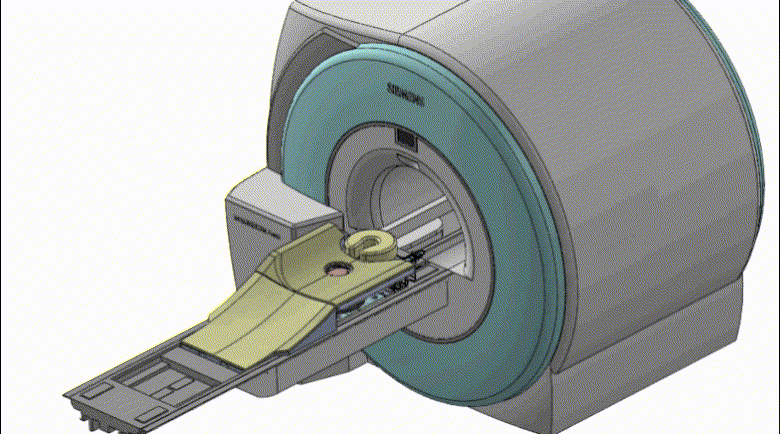
Breast cancer is one of the most common cancers among women. Improving early detection methods and treatments have led to a reduction in breast cancer mortality, yet there still remains a need for more minimally invasive treatment options. Minimally invasive techniques can be advantageous as they reduce the risk of infections, can have a greater cosmetic appeal for patients and can reduce hospital stays. Magnetic resonance guided focused ultrasound (MRgFUS) is one of the most attractive minimally invasive techniques as it can safely and efficaciously treat localized tumors non-invasively. This work presents a breast-specific MRgFUS system that utilizes novel hardware, a tumor targeting system and a volumetric magnetic resonance imaging monitoring protocol that allows for real-time monitoring of breast MRgFUS treatments.
The breast MRgFUS system incorporates a treatment cylinder that houses a phased-array transducer, an 8-channel integrated receive-only radiofrequency imaging coil and four MRI receive-only radiofrequency positioning coils. A patient support table is placed over the treatment cylinder and the treated breast is acoustically coupled to the transducer with a disposable silicone liner. The transducer is driven by an MR compatible power generator and the system is operated by a software package that performs both treatment planning and monitoring. The breast MRgFUS system was evaluated in a prospective single center study treating N=10 patients with clinically non-palpable T0 breast cancer. The targeting algorithm used for initial placing the FUS focus within the tumor is described in detail and demonstrated an accuracy of 2.9±1.8mm in a phantom and 6.2±1.9mm in the patient population. For treatment accuracy confirmation and treatment monitoring, volumetric magnetic resonance thermometry and acoustic radiation force imaging measurements were successful in the majority of the population. Importantly, the treatment time ranged from 73 to 114 minutes, demonstrating the potential for this breast MRgFUS system to be utilized in an outpatient treatment setting.

